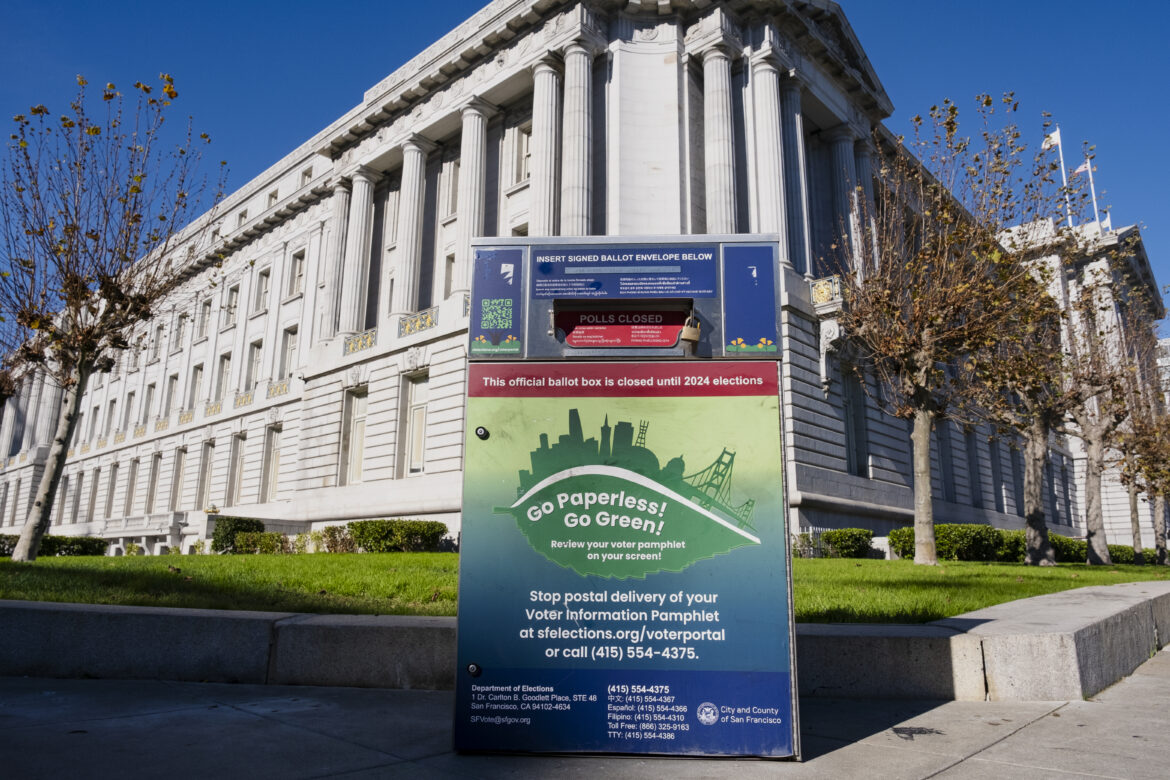This article is adapted from an episode of our podcast “Civic.” Click the audio player below to hear the full story.
If you vote in San Francisco and you’re registered with the Peace and Freedom, Green, Republican or Democratic parties, you’ll get to make some extra choices in the March 5 election that only come around once every four years — the representatives who run your party at the local level.
Voters registered with those four parties received ballots by mail that included candidates for their parties’ presidential primary and also candidates for their respective county central committees. The Green Party refers to its local entity as a county council.
Whether called committee or council, these are the people who officially run those political parties in San Francisco. They decide which local measures and candidates the party will endorse, and they support the formation of local political clubs. They also coordinate in various ways with their parties at the state and national levels.
For this “Civic” episode, we talked with representatives from the four parties. We also talked with Theo Ellington, vice president of Northern California for Strategies 360, a political strategy firm, to give a more general overview of the system. Ellington has also worked as a community organizer and on a variety of political campaigns in San Francisco, but he is not working on any campaigns for the March 5 election.
Listen to our conversation with Theo Ellington and hear from Honey Mahogany, chair of the San Francisco Democratic Party; John Dennis, chair of the San Francisco Republican Party and head of the California GOP; Meghann Adams of the Peace and Freedom Party; and Barry Hermanson of the Green Party.
Party members vote by California State Assembly district, and so voters see on their ballots the names of candidates associated with the district in which they live.
What is notable for this election is the amount of money raised for candidates running for San Francisco’s Democratic County Central Committee. As of Feb. 27, across both Assembly districts, candidates in those races had raised nearly $2.3 million. Fundraising limits that apply to other local candidates don’t apply to people running for seats on party central committees. In the past, these weren’t high-dollar campaigns.
Voting in the Presidential Primary
California voters who are registered with one of six parties — the American Independent Party, the Democratic Party, the Green Party, the Libertarian Party, the Peace and Freedom Party, or the Republican Party — received in the mail ballots to vote in their parties’ presidential primaries.
Voters who are not registered with a party received mail-in ballots that don’t have any presidential candidates on them, but can still request a ballot to vote in the presidential primary for one of three parties that allow “no party preference voters” to participate: the American Independent Party, the Democratic Party and the Libertarian Party. All other parties require that voters be registered party members to participate in their primaries.










